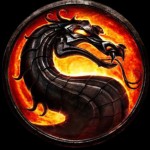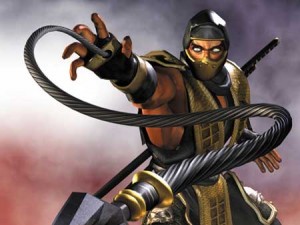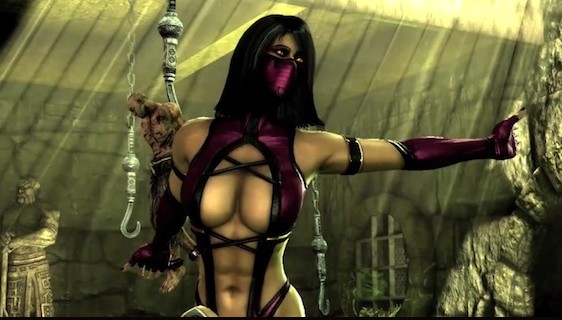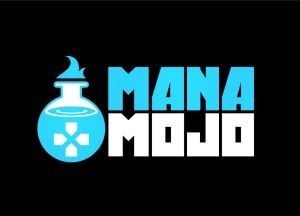 When a friend of mine announced that he was bringing over his copy of the new Mortal Kombat game for me to borrow I was shocked. Not at his generosity (he’s that type of guy) but at his brazenness. For those of you reading this and thinking, ‘What the hell is this going on about?’, let me explain.
When a friend of mine announced that he was bringing over his copy of the new Mortal Kombat game for me to borrow I was shocked. Not at his generosity (he’s that type of guy) but at his brazenness. For those of you reading this and thinking, ‘What the hell is this going on about?’, let me explain.
In yet another example of the ridiculousness of the Australian classification system and lack of an R18+ rating for games, Mortal Kombat was ‘refused classification’, making it illegal to sell, or even own a copy of it, in this country. Pretty stupid right? It’s not like we’re talking Mein Kampf here (although that is available…..). What makes it even more galling is that it was banned for the following:
“At the conclusion of a bout, a character is invited to perform a ‘fatality’. If this is successfully accomplished, a non-interactive cut scene is triggered which depicts a character explicitly slaughtering their opponent.
The game includes over 60 fatalities which contain explicit depictions of dismemberment, decapitation, disembowelment and other brutal forms of slaughter. Despite the exaggerated conceptual nature of the fatalities and their context within a fighting game set in a fantasy realm, impact is heightened by the use of graphics which are realistically rendered and very detailed. In the opinion of the Board, the game contains violence that exceeds strong in impact and is unsuitable for a minor to see or play. The game should therefore be Refused Classification pursuant to item 1(d) of the computer games table of the National Classification Board.”
Fatalities have been a staple of Mortal Kombat since the beginning and every iteration since. None of them were banned. But apparently it’s not the violence that has them concerned. It is more the realistically rendered level of detail of the graphics that is the problem. Well that explains why violent games with cartoony graphics like Splatterhouse can still be released, but what about Bulletstorm, with its kill with style combos that almost always involve dismemberment of some sort, or Aliens vs Predator, which feature the Predators taking trophies of human skulls and spines?
Warner Bros. unsuccessfully appealed the decision to the Classification Review Board, who ruled “the impact of the violence in Mortal Kombat is higher than strong and thus could not be accommodated within the MA15+ classification”
Now, to be fair, it’s not entirely their fault. Their hands are tied by the lack of an R18+ rating, but can we at least have consistency! Just how realistic do the graphics have to be? In Bulletstorn I can lob a grenade that blows my opponent into assorted body parts. In Mortal Kombat I can punch into my opponents chest, freeze their heart and then slam them in the face with it. Which one of these is more likely to be copied in ‘real life’?
Anyway, despite my opinions (as valuable as they are), Mortal Kombat remains banned in Australia and it is a real shame because this is definitely the best entry in the series since my personal favourite – Ultimate Mortal Kombat 3. (Memory Lane Sidenote: I once beat the arcade version of UMK3 blindfolded. I don’t know whether to be proud or ashamed).
Much like the recent Star Trek movie, Mortal Kombat (chronologically it is #9) is a reboot of the MK universe, with a welcome return to the 2D style of fighting from the earlier days of the series. No more sidestepping and stupidly endless circling of the opponent, bliss. The graphics are still rendered in 3D, using the same modified Unreal engine they used for Mortal Kombat vs DC Universe, but have managed to lose the weird plastic look all the combatants had in that game. They really are well done and are used to great effect to bring the characters to life during Story Mode and for the Fatalities and X-Ray mode during combat.
Each combatant has a power meter that can be charged by various actions during the fight in order to power up special attacks and activate X-Ray mode. During this attack, an internal view of the victim character is shown with bones and organs being broken from attacks, doing around 30% damage (50% for bosses!). It is very cool, but unfortunately isn’t a guaranteed hit so it is still possible to use up all of your hard earned power for nothing, and after the first few times the novelty factor is lost.
There are a plethora of additional modes, including the standards like Arcade, Versus, Training, & Online, as well as the Challenge Tower, the Krypt, Story, Tag Team VS & more. I didn’t get enough time to try all of them before my friend cruelly deprived me of the disc, however I did manage to complete Story Mode and get a fair way into the Challenge Tower.
The Challenge Tower mode is a single-player option that includes 300 challenges of various difficulties providing Kombat Koin rewards upon completion. Amongst the various challenges are the classic ‘Test Your Might’, as well as new variations like, ‘Test Your Sight’ (finding an object hidden under shuffled cups or skulls), ‘Test Your Strike’ (destroying a specific block in a stack), and ‘Test Your Luck’ (battles with certain conditions/limitations). It is a lot of fun, and apparently has a bonus after the 300th level.
I briefly dabbled with the online mode game ‘King of the Hill’ option, where up to eight players can act as spectators and play the winner of a fight. Spectators may also rate the fights. The netcode appeared quite good, and although I did experience a bit of lag, it wasn’t too detrimental.
I also spent some of my Kombat Koins in the Krypt but it seems for the die-hard fans only, with the majority of items appearing to be development artwork and other behind the scenes items. I would prefer if it worked more like a store, in which you could select the items you wanted.
However, most of my time was taken up with the awesome Story mode. A well written story, motion captured ‘acting’, apparently ban worthy graphics, and the chance to play as multiple characters during the course of the story, all combine to create the most enjoyable Story mode I have ever played in a fighting game. I’m a sucker for alternate reality stories and this one doesn’t disappoint.
………………SPOILERS AHEAD……………….
It begins with a fight between the Thunder god Raiden and Shao Kahn. Just as Raiden is about to be killed by the evil warlord he casts a spell on his shattered magical amulet, which sends the message “He must win” back in time to himself during the events of the first Mortal Kombat.
Now armed with this cryptic knowledge and flashes of future images, the past version of Raiden comes to the apparently obvious conclusion that Liu Kang must to win the tournament and save Earthrealm from Outworld. But, although Liu Kang succeeds, Raiden’s amulet continues to deteriorate, a sign that future events remain unchanged. Furious at Outworld’s defeat, Shao Kahn orders Shang Tsung’s execution, but relents when the sorcerer suggests holding a second tournament in Outworld. Raiden attempts to change the timeline by substituting Kung Lao for Liu Kang (the original timeline’s winner of the Outworld tournament) as the champion of the second tournament. However, Shao Kahn cheats and kills Kung Lao in combat. An enraged Liu Kang then attacks and mortally wounds the villain. Raiden notes the timeline is still unaffected as his amulet continues to deteriorate.
Healed by the sorcerer Quan Chi, Kahn enters into an alliance with him and invades Earthrealm. Together with other fighters, Raiden and Liu Kang attempt to stop Kahn, although many of their allies are murdered by Kahn’s resurrected wife Sindel. Nightwolf sacrifices himself to kill Sindel in turn.
Raiden confronts Quan Chi, and learning of the alliance with Kahn, realizes that the message “He must win” refers to Kahn himself – if he is allowed to merge Outworld and Earthrealm without earning the right through a Mortal Kombat tournament, he will be punished by the Elder Gods for the violation of the Mortal Kombat code. However Liu Kang, almost mad with grief at the loss of his friends and love interest Kitana, ignores Raiden’s warnings and attacks the approaching Shao Kahn. Trying to subdue Liu Kang, Raiden accidentally kills him. Grief-stricken, Raiden surrenders to Shao Kahn and the timelines merge back to the point where it started. The Elder Gods intervene, possessing Raiden and using him as a vessel to kill Kahn for breaking the Mortal Kombat code. After killing Kahn, Raiden vows to rebuild Earthrealm with the help of survivors Johnny Cage and Sonya Blade. It is then setup for a sequel, when Quan Chi is discovered to have a secret alliance with his master Shinnok, who intends to take advantage of the chaos and the elimination of Kahn to conquer both Outworld and Earthrealm in the name of the Netherrealm.
During the main story there are various side stories like, Johnny Cage attempting to woo Sonya (which of course involves a fight), Kitana finding Shang Tsung’s lab where he is making the hybrid Mileena (echoes of Alien Resurrection’s excellent ‘Ripleys 1-7’ scene), and the pre-cyborg Cyrax questioning his loyalty to his Grandmaster’s vision for the future of the clan. It is great stuff and worthy of a movie adaptation (it’s far better than the actual Mortal Kombat movies).
Hopefully in the future I’ll be able to check out some of the other features but on the basis of what I did experience, especially Story mode, I give Mortal Kombat 4.5 Lukes.









